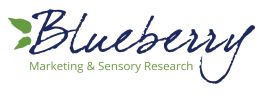Historically, sensory research has been conducted in person. But, as we’ve all learned the hard way over the last year and a half, sometimes circumstances beyond our control ultimately force change. While the pandemic necessitated a move to online methods for marketing research in general, this transition has been particularly difficult for sensory research. It’s certainly been a learning experience for many; however, we believe the change has also created an opportunity to explore the rich insights that can be obtained through virtual methods, not to mention the convenience and flexibility it can provide. Here’s how to ease your transition to online and why your moderator may be your biggest ally in the process. Read more









